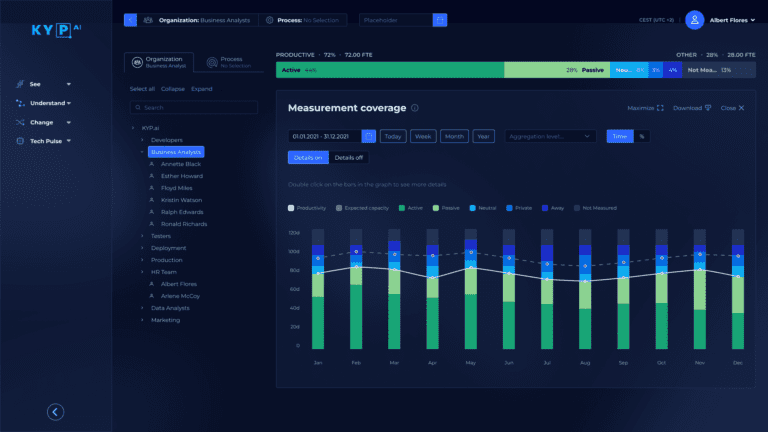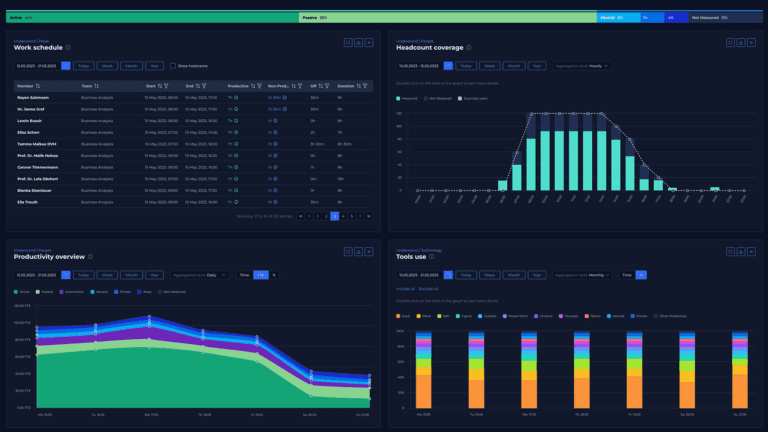There’s a story I keep hearing, told in different ways by CIOs, transformation leads, and even a few brave process owners. And it goes something like this:
“We bought state-of-the-art AI agents to run our operations – deciding, automating, even self-optimizing – but once the initial excitement faded, we found out that they were flying blind.”
It’s a story that’s playing out across industries, from banking to logistics. The promise of agentic AI – autonomous, self-improving, endlessly scalable – has become the new North Star for digital transformation.
But as the first wave of deployments hits the rocks, a quieter, more sobering truth is emerging: agentic AI isn’t a shortcut, it’s a force multiplier. And if you don’t know what you’re multiplying, you’re just scaling confusion.
The Allure (and Illusion) of Self-Driving Agents
The idea of AI agents that “just know what to do” is intoxicating. Who wouldn’t want a digital workforce that identifies bottlenecks, fixes problems, and keeps the engine humming? All without human intervention?
Here is what doesn’t make it into the agentic AI sales pitch. In real enterprise environments, work is messy. Processes rarely follow the neat diagrams we draw for them. People create workarounds, systems don’t always talk to each other, and every department has its own way of getting things done. When you unleash agentic AI into that reality, you’re not automating excellence. You’re automating whatever you already have: the good, the bad, and everything in between.
I recall speaking with a transformation lead at a global BPO firm. They are investing heavily in agentic AI, convinced it would finally bring order to their sprawling operations. Instead, the AI agents started making decisions that looked logical on paper but made no sense in practice.
Consider this scenario. In the pursuit of faster response times, the agentic AI eagerly grabs every “urgent” customer support ticket and passes it off to the first available agent, never mind expertise or context. On paper, the logic is sound: eliminate delays, hit those KPIs, keep the queue moving.
In practice, though, the system backfires. Suddenly, junior agents with minimal subject knowledge are fielding the most complex issues. Customers in genuine distress often end up repeating themselves, receiving partial answers, or being passed from one agent to another.
What should have been a performance win fizzles into a cycle of unresolved requests, frustrated clients, and an ever-increasing backlog of escalations. Eventually, turning a metric-driven initiative into a customer experience crisis.
Why Process Discovery Isn’t Optional
This is where the hard work comes in. The work that rarely makes headlines but always pays off. Before you can trust an AI agent to make decisions, you have to understand the decisions that are actually being made today. That means mapping your processes as they really are, not as you wish they were.
Process discovery used to be a painful, manual slog. Teams would spend months in workshops, drawing flowcharts and interviewing staff, only to end up with an incomplete picture. But the stakes are higher now. With agentic AI, the cost of getting it wrong isn’t just inefficiency. It’s real risk. You can’t afford to let an AI agent “creatively” solve problems in a black box.
That’s why process intelligence tools with process discovery features like KYP.ai are becoming indispensable. They offer a kind of operational x-ray, revealing not just the official steps in a process, but the detours, workarounds, and human handoffs that make up the real day-to-day.

Suddenly, you can see where automation will help, but also where it might do harm. You can spot the hidden bottlenecks, the compliance risks, and areas where human intelligence makes a significant impact.
The Real Story Behind Agentic AI Success
Organizations that want to succeed with agentic AI must first invest in process intelligence. Not just throw agents at the problem and hope for the best. Instead, do the groundwork—mapping, measuring, and understanding their processes and workflows—so that when the agentic AI arrives, it has the best chance of making things better.
Take Mindsprint, for example. They used KYP.ai to map over 600 workflows across 55 countries. That’s not just a data point. It’s an advantage. By understanding their operational reality, they could pinpoint exactly where AI agents (and automation in general) would drive real value, not just on paper. The result? Faster, more reliable processes, and a digital transformation that delivers tangible outcomes.
In this context, the real boost in productivity happens not because AI is upgraded with a recent model, but because the AI you use is informed with better data.
The Paradox of Autonomy
In my recent conversation with Miroslaw Bartecki, Co-founder and CTO of Kyp.ai, responsible for the development of the Productivity 360 platform, I gained a valuable insight.
There’s a paradox at the heart of all this: the more autonomy you give to AI, the more structure you need to provide. Agentic AI isn’t a replacement for understanding your business; it’s a reason to understand it even better. Without clear boundaries and a thorough understanding of your processes, AI agents often operate based on assumptions. They might solve the wrong problems, or worse, create new ones.
That’s why process discovery isn’t just a box to check. It’s the foundation for everything that follows. It’s how you turn agentic AI from a risky experiment into a strategic asset.
The Quiet Revolution
The companies that are quietly winning the AI race aren’t the ones making the most noise about their technology. They’re the ones doing the valuable work of mapping, measuring, and learning. They’re using tools like KYP.ai to see their business clearly, so that when they deploy agentic AI, they’re not just automating – they’re transforming.
Whether it’s Mindsprint transforming operations, Hollard streamlining processes, Atento boosting efficiency, or many other forward-thinking organizations, an ever-growing community of leaders is transforming effectively with KYP.ai.
So if you’re feeling the pressure to jump on the agentic AI bandwagon, take a breath. Ask yourself:
- Do you know how your business runs?
- Have you mapped the reality, not just the theory?
- Are your processes optimized enough to benefit from AI agents or automation?
- Have you collected enough data for autonomous decision-making, or are you just hoping they’ll figure it out?
Because in the end, agentic AI is only as good as the foundation you give it.
The future belongs to the organizations that do the work now. Those who see process discovery not as a hurdle, but as the key to unlocking the true power of AI.
That’s the real story, and at the very same time, the real opportunity behind the promise of agentic AI revolution.
Discover Your Productivity Potential – Book a Demo Today
Book Demo








